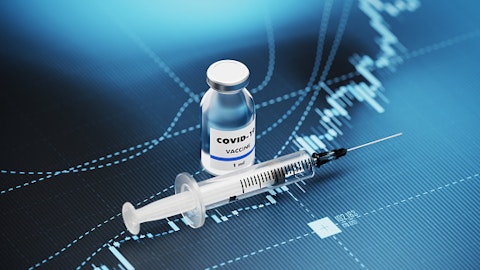Martine Rothblatt: Thank you, James. Thank you, Hartaj. Operator, next question please.
Operator: Our next question comes from Joseph Thome with TD Cowen. Please go ahead.
Joseph Thome: Hi there. Good morning and thank you for taking my questions. Obviously, a lot of progress on the organ side of the business this quarter. When we think about the xenokidney, the mirokidney and the IVIVA kidney implant. Should we think of these largely as sort of three shots on goal in kidney transplant? Or are there discrete populations that could benefit from each of these products? How do you view that? Thanks.
Martine Rothblatt: Thank you, Joe. I think the answer is all of the above, both of the above to be specific. Definitely, positively, there are multiple shots on goal, but there is a large diversity of different types of manifestation of end-stage organ disease generally and specifically within kidney disease. So I could very much see products from one of the other groups, whether it’s a xenokidney or autologous IVIVA kidney or a allogeneically cellularized with primary cells mirokidney going to different end-stage kidney disease patient populations. As you know, Joe, there are more than 0.5 million people just in the United States on dialysis. So the level of demand is really off the charts, and we’re confident that each of these kidney technologies and our other organ technologies we’ll find very, very receptive physicians and patient populations for their use. Thanks for the question, Joe. Operator, next question please.
Operator: Absolutely. Our next question comes from Eun Yang with Jefferies. Please go ahead.
Eun Yang: Thank you. So you recently started another Phase 3 TETON study for progressive pulmonary fibrosis. I’m just wondering why you are not using the DPI formulation in the trial. And once it’s approved, do you think you may not need a bridging study to DPI from the nebulizer similar to PH-ILD? Thank you.
Martine Rothblatt: Thank you, Eun. Very good question; I’d like to ask the clinical trial executive responsible for that study, Dr. Leigh Peterson, if she could please answer your question.
Leigh Peterson: Yes, sure. Thanks for the question. Regarding why we’re not using the DPI, we want to use the nebulizer to remove as many variables as possible between the studies. So between the INCREASE study and TETON 1, TETON 2 and TETON PPF, so we’re sticking with the same delivery device for those. And yes, we’ll definitely seek approval for the DPI once we see the results of these studies with a nebulizer. It’s – we’re still having ongoing conversations with FDA to determine what will be required for that approval.
Martine Rothblatt: Thank you very much, Dr. Peterson. Thank you very much, Eun, for your question. Operator, next question please.
Operator: Our next question today comes from Jessica Fye with JPMorgan. Please go ahead.
Jessica Fye: Hey guys. Good morning. Thanks for taking my question. Question on Tyvaso. So recognizing that titration dynamic you mentioned, which could suggest that the mix of new starts between DPI and nebulized Tyvaso understates the longer-term proportion who might end up on DPI. Can you talk about what you’re seeing as a mix among new starts as well as your latest expectations for the longer-term mix of Tyvaso DPI and nebulized Tyvaso within the franchise? Thanks.
Martine Rothblatt: Thank you very much Jess. Mike, would you be able to give some color on that question please?
Michael Benkowitz: Sure. Happy to. So Jess with respect to referral, sorry, with respect to the mix between the nebulizer and the DPI, I think we’ve said for the last couple quarters that it’s been kind of in the neighborhood of two thirds DPI, one third nebulizer that continues to hold true. That’s what we saw in the third quarter and actually was a couple points higher on the nebulizer in the third quarter than the prior quarters. But it’s generally kind of in that, kind of two thirds 65% to 70% DPI, 30% to 35% nebulizer. I kind of expect that it’s going to stay there. It could tip up a little bit towards DPI after the first of the year when some of the new Medicare Part D redesign elements. It’s kicking under the IRA and patient out of pocket goes down.


